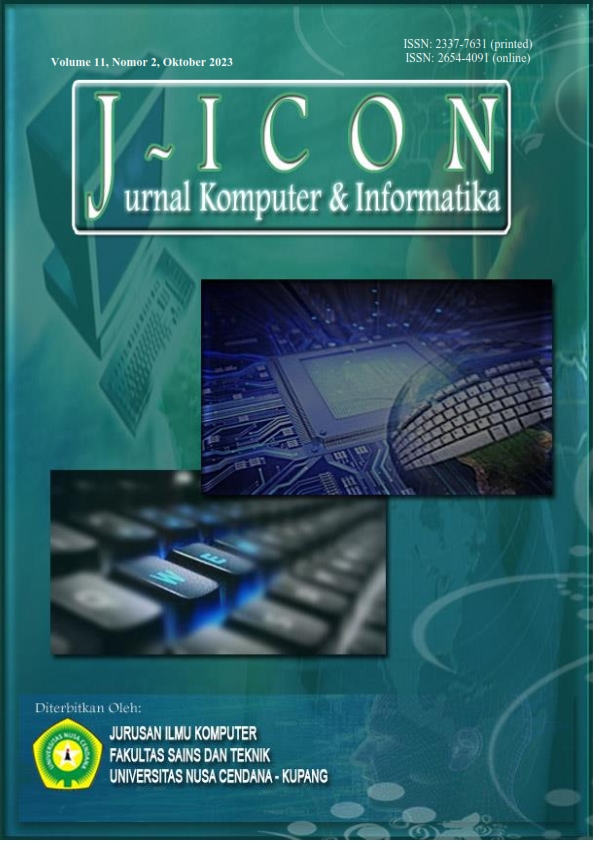Implementation of Model Based Testing for Testing Kawn Subscriptions Manager Application
Abstract
This research focuses on the Kawn Subscriptions Manager app, which was developed to help Food and Beverage (F&B) businesses manage customer subscriptions. Currently, the Kawn Subscriptions Manager application does not have a standardized test suite that has been validated. Therefore, in this research, Model-Based Testing (MBT) is applied in testing the Kawn Subscriptions Manager application as a testing method to produce a specific and technical test suite. MBT is a testing method based on the behavioral model of the system being tested. Then, to measure the adequacy of test cases generated by MBT, mutation testing is used. The model is created using the GraphWalker tool and testing is done automatically using Selenium and testNG in the Eclipse IDE text editor. From the results of the study, it is known that MBT testing generates test cases from the behavior model of the function being tested. Testing with MBT shows that no failures were found in the tested functions. Then the average mutation score is 72.18% which indicates that the test cases generated by MBT are adequate or in the medium category. However, it is important to note that while MBT was successful in generating test cases that examined the application's behavior, it was found that the method was unable to detect failures caused by mutants that did not significantly affect the application's behavior. This finding suggests that while MBT can be an effective tool for testing key functions, additional methods are needed to identify failures that may result from minor or insignificant changes to the application code.
Downloads
References
J. F. S. Ouriques, E. G. Cartaxo, and P. D. L. Machado, “Test Case Prioritization Techniques for Model-Based Testing: A Replicated Study,” Aug. 2017. [Online]. Available: http://arxiv.org/abs/1708.03240
V. Singh and S. Ramasamy, “An exploration of model based testing,” Article in International Journal of Scientific and Engineering Research, vol. 6, no. 2, 2015, [Online]. Available: https://www.ijser.org/paper/An-Exploration-of-Model-Based-Testing.html. [Accessed 10 October 2022].
R. Reddy, P. Syed, and A. Irtaza, “Software Testing: A Comparative Study Model Based Testing VS Test Case Based Testing,” 2012. [Online]. Available: https://api.semanticscholar.org/CorpusID:17864120. [Accessed 10 October 2022].
L. Apfelbaum and J. Doyle, “Model Based Testing,”, May 1997. [Online]. Available: https://api.semanticscholar.org/CorpusID:8815835. [Accessed 10 October 2022].
H. Felbinger, F. Wotawa, and M. Nica, “Empirical study of correlation between mutation score and model inference based test suite adequacy assessment,” in Proceedings - 11th International Workshop on Automation of Software Test, AST 2016, Association for Computing Machinery, Inc, May 2016, pp. 43–49. doi: https://doi.org/10.1145/2896921.2896923
M. Utting, A. Pretschner, and B. Legeard, “A TAXONOMY OF MODEL-BASED TESTING,” 2006. doi: https://doi.org/10.1002/stvr.456
L. L. Muniz, U. S. C. Netto, and P. H. M. Maia, “TCG: A model-based testing tool for functional and statistical testing,” in ICEIS 2015 - 17th International Conference on Enterprise Information Systems, Proceedings, SciTePress, 2015, pp. 404–411. doi: https://doi.org/10.5220/0005398604040411
M. N. Zafar, W. Afzal, E. Enoiu, A. Stratis, A. Arrieta, and G. Sagardui, “Model-Based Testing in Practice: An Industrial Case Study using GraphWalker,” in ACM International Conference Proceeding Series, Association for Computing Machinery, Feb. 2021. doi: https://doi.org/10.1145/3452383.3452388
J. Korhonen, W. Afzal, and E. P. Enoiu, “Automated Model Generation Using GraphWalker Based On Given-When-Then Specifications,” 2020. [Online]. Available: https://www.diva-portal.org/smash/get/diva2:1451401/FULLTEXT01.pdf. [Accessed 10 October 2022].
X. Y. Djam and Y. H. Kimbi, “A Fault-Based Testing Approach in Safety Critical Medical Systems,” Journal of Software Engineering and Applications, vol. 13, no. 06, pp. 129–142, 2020, doi: https://doi.org/10.4236/jsea.2020.136009
R. Just, G. M. Kapfhammer, and F. Schweiggert, “Do redundant mutants affect the effectiveness and efficiency of mutation analysis?,” in Proceedings - IEEE 5th International Conference on Software Testing, Verification and Validation, ICST 2012, 2012, pp. 720–725. doi: http://dx.doi.org/10.1109/ICST.2012.162
A. Derezińska and K. Hałas, “Experimental evaluation of mutation testing approaches to Python programs,” in Proceedings - IEEE 7th International Conference on Software Testing, Verification and Validation Workshops, ICSTW 2014, IEEE Computer Society, 2014, pp. 156–164. doi: https://doi.org/10.1109/ICSTW.2014.24
A. Derezinska and M. Rudnik, “Evaluation of mutant sampling criteria in object-oriented mutation testing,” in Proceedings of the 2017 Federated Conference on Computer Science and Information Systems, FedCSIS 2017, Institute of Electrical and Electronics Engineers Inc., Nov. 2017, pp. 1315–1324. doi: https://doi.org/10.15439/2017F375
R. Maxion, “Experimental Methods for Computer Science Research,” Institute of Electrical and Electronics Engineers (IEEE), Sep. 2009, pp. 136–136. doi: https://doi.org/10.1109/LADC.2009.29
Copyright (c) 2023 Arnaldo Marulitua Sinaga, Mikhael Hutapea

This work is licensed under a Creative Commons Attribution 4.0 International License.
The author submitting the manuscript must understand and agree that if accepted for publication, authors retain copyright and grant the journal right of first publication with the work simultaneously licensed under a Creative Commons Attribution (CC-BY) 4.0 License that allows others to share the work with an acknowledgment of the work’s authorship and initial publication in this journal.
 Arnaldo Marulitua Sinaga(1)
Arnaldo Marulitua Sinaga(1)




